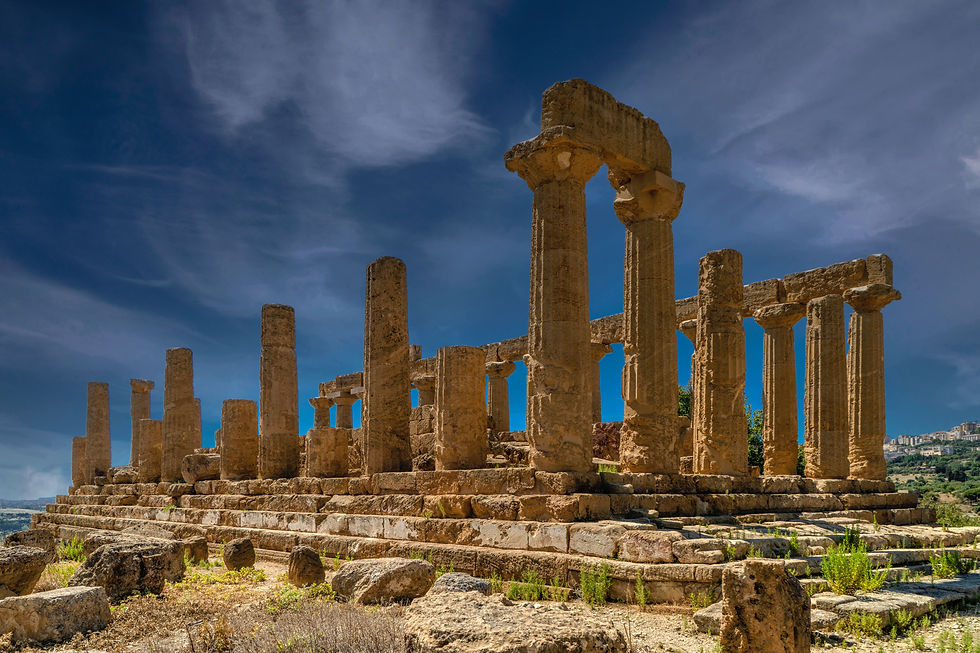South Node, Ketu, Cauda Draconis – Archivist of the planets
- VMA - Vedic Medical Astrology
- May 6, 2023
- 4 min read
Just like the north node Rahu, the south node Ketu does not represent a physical planet but is in fact the southern intersection between the orbits of the Sun an the Moon, and these intersections are also the points where eclipses occur. While both lunar and solar eclipses can occur at either the northern or the southern intersection points, it is customary to associate the northern point or Rahu with the solar eclipses while the southern point or Ketu is associated with the lunar eclipses.
While practically absent from western astrology, Ketu receives huge significance in vedic astrology which considers him at least as important as the planets themselves. In Hindu culture and mythology, Ketu is represented as an antigod\demon named Swarbhanu who drank from the nectar of immortality, but as he did so his head was cut off by Vishnu turning him into two separate entities with the head becoming Rahu and the body Ketu.
For more information about the mythology associated with Venus, please visit “Killer whales and Jesus Christ – Rahu and Ketu in mythology”
In the ancient Hindu texts Ketu is described as having an influence similar to Mars, representing our past and the things we have already experienced and accomplished in past lifetimes. The effect of Ketu often gets compared to a black hole, because the planets he is conjunct and the house where it falls in the birth chart seem to lose most of their strength. In addition, Ketu is said to represent the past, detachment and apathy, separation and dispersion, criticism, the subconscious, reflexes and instincts, genetics and the DNA.

So what does Mars have to do with black holes and lunar eclipses?
The reason why Ketu is said to be similar to Mars is that during a lunar eclipses, the Moon doesn’t disappear like the sun but instead turns a menacing shade of red similar to the planet Mars. In addition, while Mars represents advancing, war and conquest, Ketu represent that which was already conquered in the past. This is why Ketu represents past lives, and the achievements already gained in them which in current lives become talents and habits. Ketu also represents flags, both because in the myth his headless body was said to drift in the cosmos, fluttering in the wing like a flag, and because flags symbolize territory which is already conquered and owned.
The connection between Ketu and black holes on the other hand is more than symbolic, as Ketu represents the past and black holes are in fact the carcasses of stars. In addition, inside the black hole itself matter is compressed to the point that even the space between the atoms disappear, bringing it back to its state in the beginning of the big bang. Another connection to Ketu is the fact that the event horizon, the border of the black hole, keeps images of everything sucked into it that serve as a kind of memory and a reflection of the past.

But why detachment, separation and endings? And what do they have to do with criticism?
The mythological portrayal of Ketu as a body detached from its head makes it quite easy to understand why ne became symbolically associated with all forms of separation. In addition, without the senses located in the head, the lifeless body of Ketu no longer has any need for worldly pleasures, hence his association with detachment from the material world and from desire itself. This is also why Ketu is said to represent the concept of Moksha or Nirvana, the liberation from the cycle of life and rebirth, as reincarnation itself is said to be the result of unfulfilled desires.

The connection of Ketu to scattering and dispersion also stems from his association with the past, which slowly gets eroded and forgotten. It would be enough to look at our own memories and see how fragmented and scattered they become to understand this process. The same happens to buildings, which slowly erode and collapse, with trees that eventually fall and even with our own bodies which eventually decay and their bone get scattered deep beneath the ground, or turn to ashes and get scattered by the wind. Even the stars and the galaxies eventually drift apart and burn out, leaving behind black holes and lifeless rocks. This process is called Entropy, and represents one of the unavoidable laws of nature.
The connection between Ketu and criticism on the other hand, is a little more complicated. On the most basic level, this connection stems from the fact that only the past and things which have already been completed and experienced cat be criticized, otherwise it isn’t criticism but instead a disagreement. In addition, the purpose of criticism is actually to educate us by using past mistakes and attempting to derive from them lessons for the future.

And what about instincts and DNA?
The connection of Ketu to the DNA and genetic code, stems from is passes down from one generation to another, representing the heritage of the past. In a sense, it also contains the experience and adaptations accumulated by the previous generations, which helped them survive while others went extinct. The same goes for instincts and reflexes, which were developed millions of years ago yet still help to keep us alive in dangerous situations. In addition, both reflexes and instincts are autonomous systems that activate without us thinking about it, just like the headless Ketu who can no longer think at all. Unfortunately, sometimes these autonomous systems malfunction, creating nervous ticks out of reflexes and phobias out of instincts, and these too are involuntary and represented by the headless Ketu.





Comments